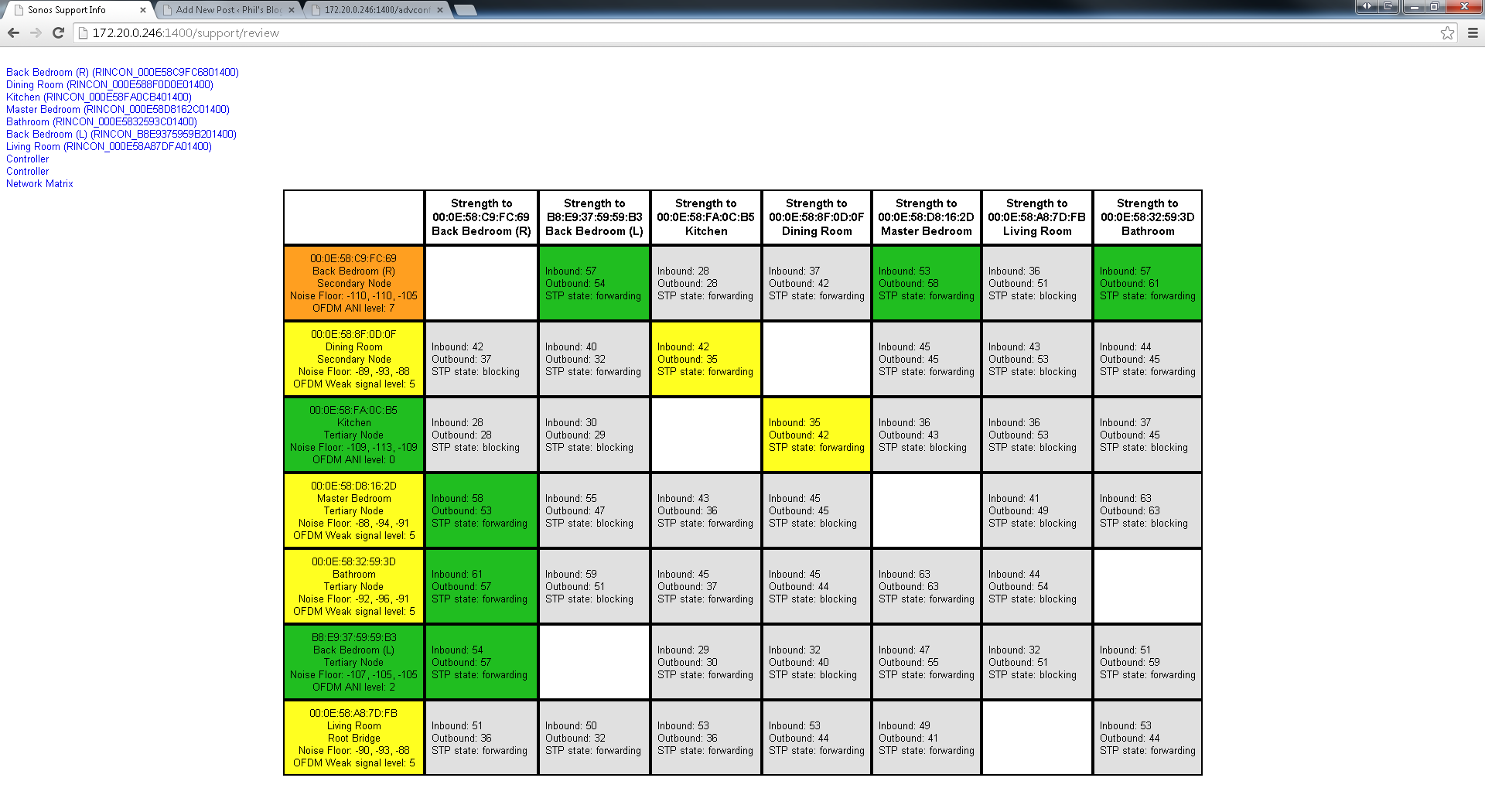For those who are thinking about putting in a Sonos sound system (or for those who already have one) the system has a ton of great features that make putting in a multi-zone home sound system very easy. Unfortunately, the system, as designed, runs on WiFi. So when we remodeled our home and Stuart said he wanted to put in Sonos, I knew I needed to do some research. The good news is that I found a solution and we have been running our Sonos system hard-wired for over a year now.
Fill in the padres of your Sonos speaker with port 1400. Go to the advanced tab and you need to replace the XXXXX in each LUA code of each button with the name of the variable you just created. Remember the name has to be exactly with what you have noted in the variable panel. Now the VD remote should work. Port 1400 is a commonly used remote port, not local to the computer. Back then there wasn’t a lot of information on this interface online, which has changed over the past few years. Today, if you search for “sonos web interface” or “sonos hidden interface” you’ll finde various information, just as published here. The interface can be found on port 1400/TCP. View the manual for the Sonos Port here, for free. This manual comes under the category Audio Streamers and has been rated by 3 people with an average of a 7.7. This manual is available in the following languages: English. Do you have a question about the Sonos Port or do you need help? Ask your question here. Port is the successor to Connect, delivering richer sound and extending Sonos’ sound platform to your traditional home audio equipment. Port includes an updated digital-to-analog converter for clearly detailed sound and a 12V trigger, which automatically turns on your amplifier to.
As a company, Sonos does not recommend hard-wiring their system, but through several other audiophile blogs, we found many others were looking to hard-wire their systems as well. Sonos makes building a multi-zone system simple and that is one of the primary reasons people buy the solution. Audiophiles believe however, that you get better sound with a wired solution, and therefore get the best of both worlds by hard-wiring the system.
It's a two step process:
STEP 1: Hard-wiring your Sonos components and speakers

In order to run your system wirelessly, both your Sonos components and your main speakers must be hard-wired.
1. Our Sonos system includes three zones of in-ceiling speakers, a soundbar and a sub-woofer.
2. We ran speaker wire to each of the in-ceiling and outdoor speakers. This is a standard process that can be done by an electrician. The speaker wire terminates into the Sonos CONNECT:AMP.
Sonos Port 1400 Map
3. The CONNECT:AMP, connected to the speakers via speaker wire, provides the power to the speakers (as a normal AMP does). The CONNECT:AMP is then hard-wired (CAT-5) to our multi-port network switch (which is connected to the modem.) Our modem is a model that doesn't not have a built-in wireless router.
4. Each 'zone' that you install works the same way with a single CONNECT:AMP running a set of speakers.
5. The soundbar and sub-woofer both have ethernet plugs that you can plug your CAT-5 cables into. No speaker wires are necessary.
At this point, all speakers are hardwired, but the CONNECT:AMPs are still producing a WIFI signal. This takes us to STEP 2.
STEP 2: Disabling the WIFI on the Sonos Units
1. Open the Sonos app on your computer. Ensure that your computer is connected into the same network as your speakers / Sonos units.
2. Under the Sonos menu, click About My Sonos System. You will see a list of your Sonos equipment. Each Sonos unit will have its own IP address.

3. Open a new tab in your web browser. Enter http://<sonos_ip>:1400/wifictrl?wifi=persist-off. Do this for each unit, entering its IP address in place of <sonos_ip>. This will turn the WiFi off permanently.
That's it. The wireless signal from each of the units is now off. You can confirm this by:

- Checking the status of your system: http://<sonos_ip>:1400/status/ifconfig.
- If there is no entry beginning with 'Ath0' then you have successfully disabled the WiFi on your Sonos system.
Sonos Port 1400
In case you ever need to turn the WiFi on again, follow step (3) above, but type http://<sonos_ip>:1400/wifictrl?wifi=on instead
Sonos Port 1400
While the biggest pro to make this change is the elimination of wireless, there's one con to be aware of. You'll no longer be able to manage your Sonos system via smartphone as they do so via your wireless network. You'll need to leverage a hardwired iPad or computer running the Sonos App. It's less convenient but you will still have the complete functionality of the system.
Sonos Tcp Port 1400
Again, this process is not recommended by Sonos. They do not provide this advice via their Customer Service nor on their website. The advice offered is from our personal experience only. We hope not, but as with most things, your experience may vary.
Sonos Port 1400 Radio
Good luck!
